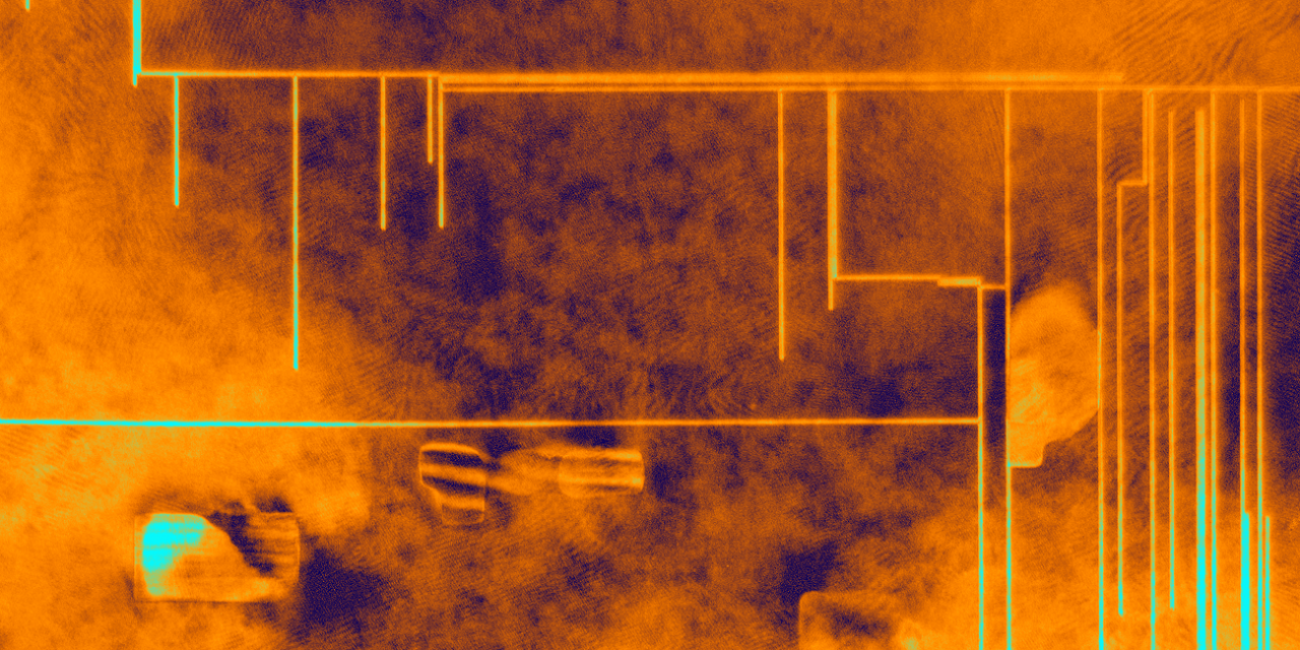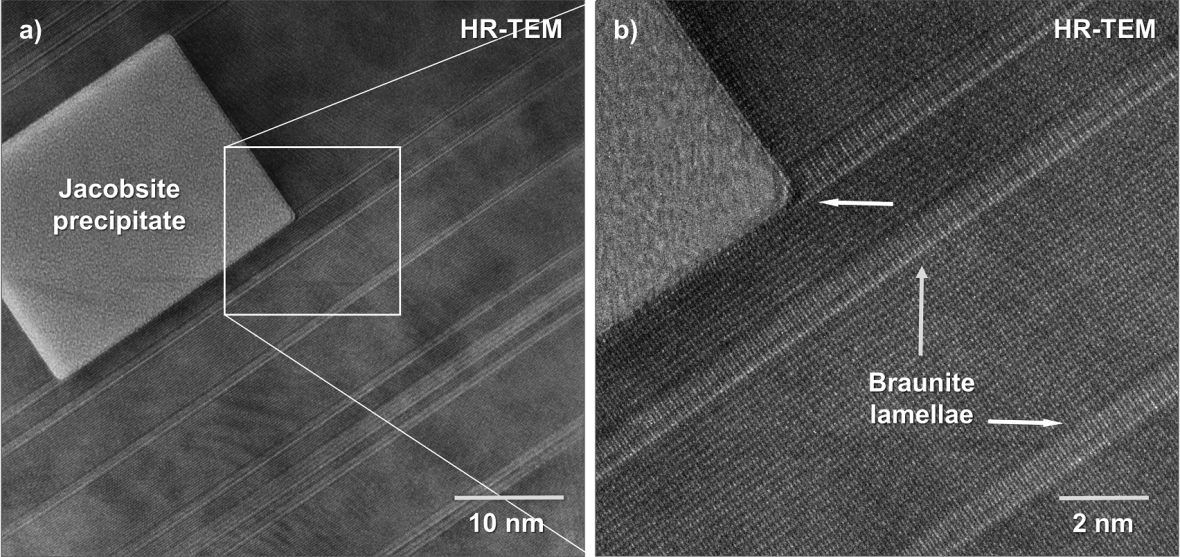Geomaterial Science

Ongoing Projects
Jacobsite Inclusions in Bixbyite from the Solar Wind Claim, Thomas Mountain Range, Utah, USA

Poject Leaders
- Johannes Peter, Maximilian Trapp, Stefan Lauterbach and Hans-Joachim Kleebe
Description
Bixbyite (Mn,Fe)2O3, space group Ia-3 (Nr. 206), is a common mineral normally occurring in crystals up to 2 mm in size. However, there is one location worldwide in the Thomas Range, Utah, USA, where crystals up to 5 cm occur.
The microstructure of the large bixbyite crystals in TEM reveals lamellae running along {100} in the structure. The lamellae have an atomically sharp interface to the surrounding bixbyite matrix. An interesting feature are parallel aligned crystal decorating the lamellae. A model explaining the large crystals and the bixbyite inclusions based on fast diffusion along the lamellae was developed.
Ongoing scanning transmission electron microscopy (STEM) examinations with the new condenser Cs-corrected JEOL TEM ARM200F combined with simulations revealed that the inclusions linked to the lamellae and also randomly distributed in the matrix with no obvious relation to the lamellae are in fact jacobsite (MnFe2O4), a member of the spinel group. Jacobsite was not described for the location up to know. The bixbyite from the Thomas Range has a Mn/Fe ratio of about 50/50, and in the phase diagram Mn2O3–Fe2O3, there is a stable phase field for Jacobsite at higher temperature for that composition. Thus, the current hypothesis is that the formation of the jacobsite in the bixbyite matrix was triggered by a high T event after the large crystals have formed. Aging experiments at the formation temperature of jacobsite with inclusion free bixbyite crystals allowed the validation of the current model for the formation of jacobsite in the bixbyite matrix.


